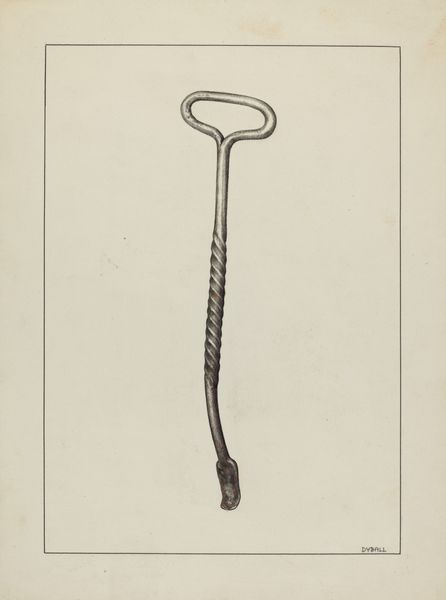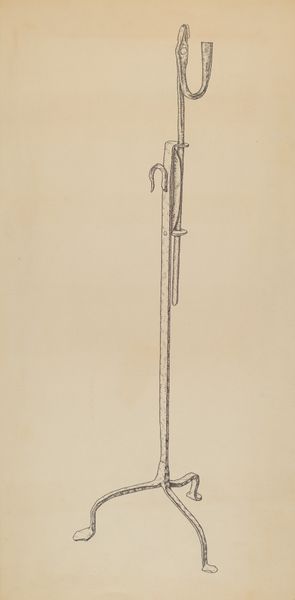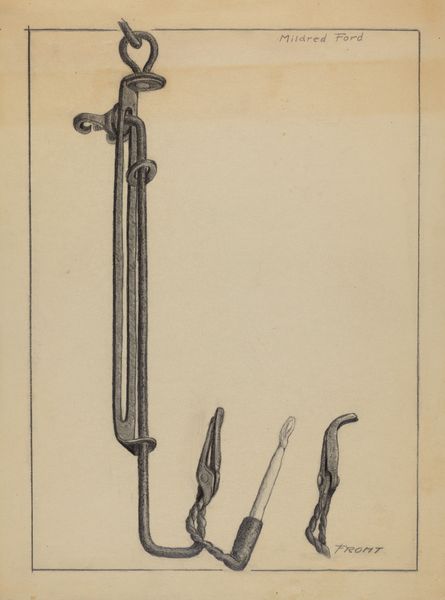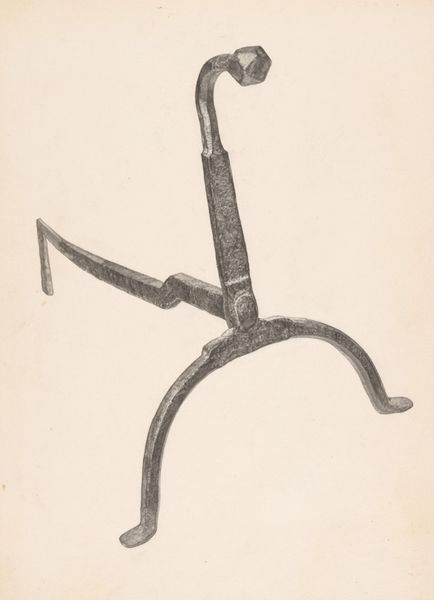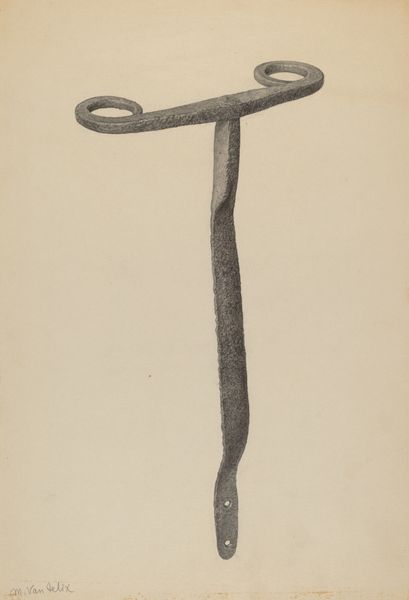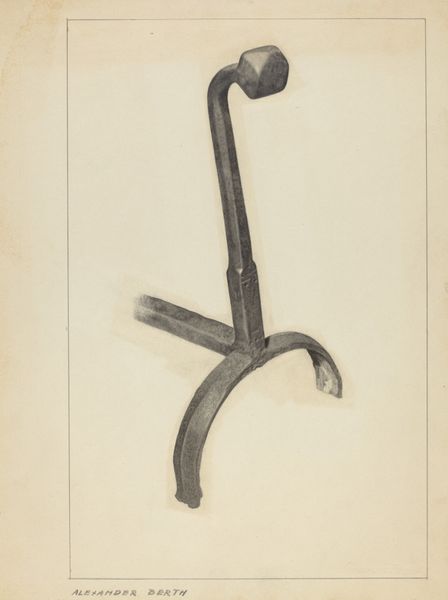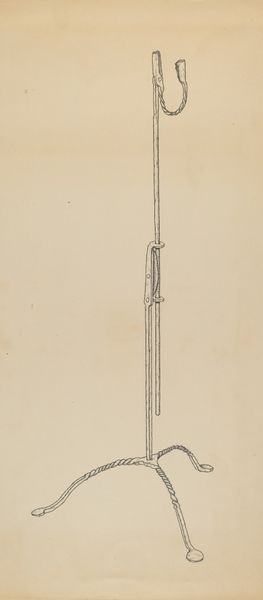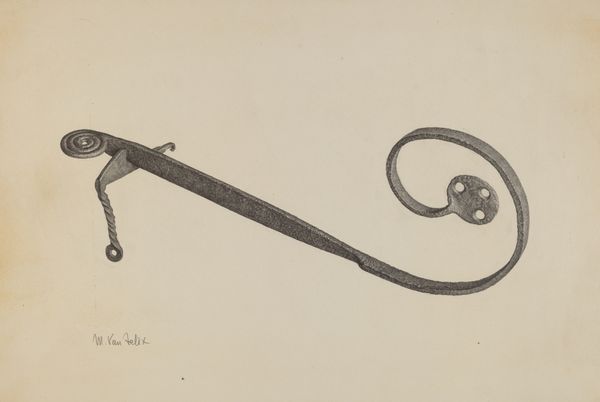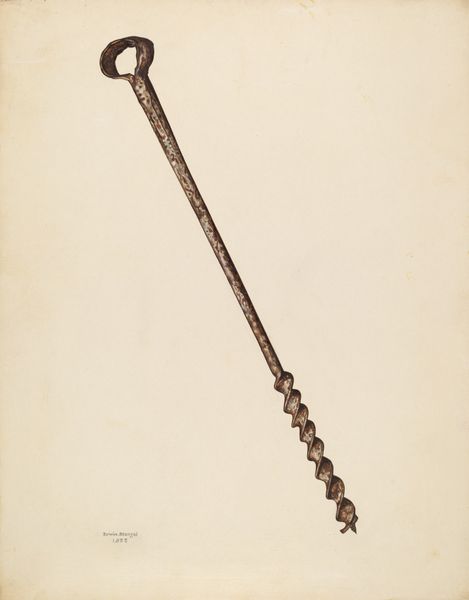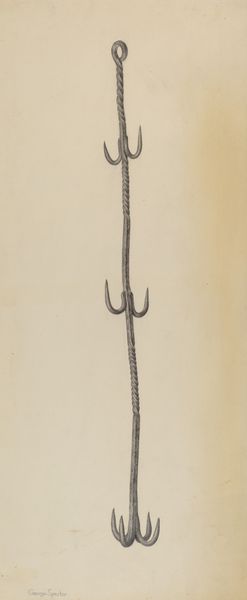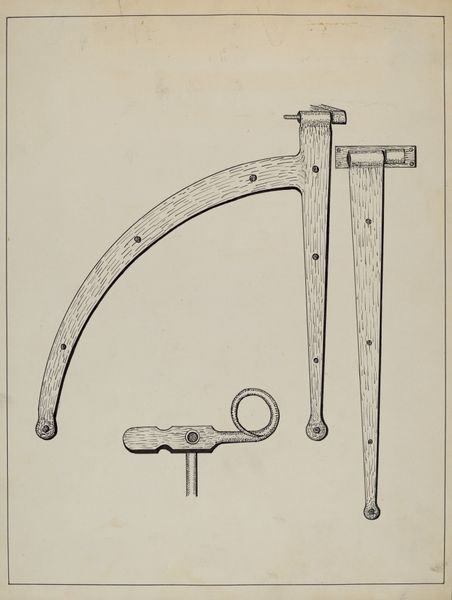
drawing, pencil
#
drawing
#
geometric
#
pencil
Dimensions: overall: 53.5 x 28.6 cm (21 1/16 x 11 1/4 in.) Original IAD Object: 15 5/8" long; hand rest: 4" in diameter
Copyright: National Gallery of Art: CC0 1.0
Editor: So, this is Jacob Lipkin's "Carpenter's Brace," from around 1941. It’s a pencil drawing, meticulously rendered. There's almost something melancholic about isolating this tool in such detail. What do you see in this piece? Curator: I see a portrait of labor, really. We're conditioned to admire portraits of people, particularly in the war years when this was made. But what about the tools *used* by the people? It asks us to consider the value of manual labor, its impact, and the worker. Think about the social and economic realities of 1941. Who was using this brace? Where? For what purposes? These were questions being asked during the war. Editor: That's fascinating, framing it as a "portrait of labor." I was just thinking about the composition, how simple it is. But your take really adds layers of meaning. Was Lipkin known for this kind of…object portraiture? Curator: He focused on geometric forms and industrial designs, often imbuing them with an almost heroic quality. The lack of adornment is part of the statement. It elevates the ordinary. It’s important to look beyond its functionality, towards the act of creation itself, often an overlooked act. Don't you think? Editor: Definitely. I never considered the social statement behind the aesthetic choice, before now. Thank you! Curator: My pleasure. Seeing everyday tools as social commentary opens up so much discussion about power structures.
Comments
No comments
Be the first to comment and join the conversation on the ultimate creative platform.

